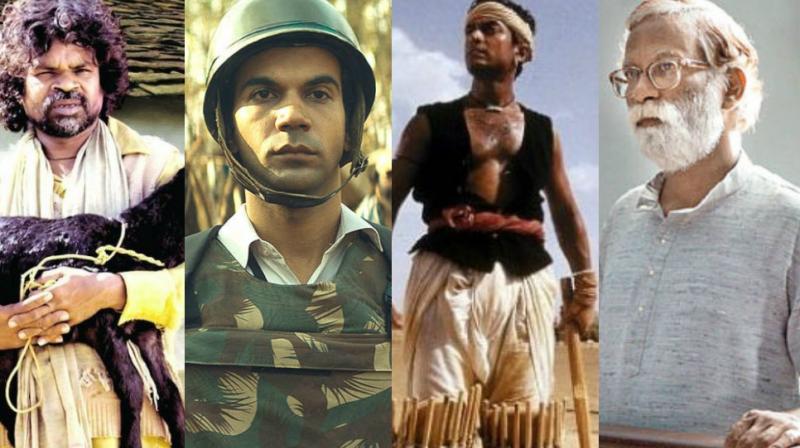India's dismal run at Oscars continues, official entries' directors try to decode why

When Rajkummar Rao starrer Newton first hit theatres in the country, it received immediate praise. The black comedy even earned a very impressive Rs 11.83 crore at the box office a week after its release. So when the film became India’s official entry for the Oscars, everyone unanimously decided that the move was just.
However, early last morning, news broke that the film didn’t make it to the next round of Oscars. And while it upset the film’s fans everywhere, the team itself isn’t feeling so morose. “The foreign film category is like the Olympics. We are competing with the best in the world, so it’s extremely tough,” begins the director of Newton, Amit Masurkar, adding “The response from Academy members to the film was very positive and we’re grateful to everyone who supported us on this journey. The experience has enriched us and has encouraged me to push my limits each time I make a new film.”
With the 1957 Mother India, India also attempted to step on this international platform. And down the years, the country has sent a long list of films spread across genres and languages. Mother India, Salaam Bombay! and Lagaan: Once Upon a Time in India are the only Indian films to have made it to the top five in the Best Foreign Language Film category at the Academy Awards, but none have won the honour.
Director Hansal Mehta, who has worked with Rajkummar on several projects, believes the recent development doesn’t take away any credit that the film has earned. “Even though Newton didn’t make the final cut, it was a powerful film made this year,” he says.
While the efforts are lauded, a fair point to consider is how truly competitive the Best Foreign Language Film category is. The Oscars have one foreign language film category, just one award for a hundred entries. “This year, there were 92 entries for the film,” begins Hansal. “They then pick nine films for the next round, finally closing on five final ones. It is a tough place,” he says.
Anusha Rizvi, whose 2010 film Peepli Live was also India’s official entry to the Academy Awards that year, explains that the film’s success is a benchmark in itself. But there is a lot that needs to be done to push a film to the Oscars ahead. “When it comes to actually winning on these big platforms, it takes a lot! Filmmakers have to learn a lot of things and have a financial reservoir to fall back on — there is a lot involved in actually winning at the Oscars,” she says.
At the same time, Chaitanya Tamhane, whose debut Marathi language project Court became India’s official entry to the Oscars in 2015, doesn’t believe in competitiveness in art. “Films aren’t like racing horses where one can bet money on,” he says. The director also takes the time out to explain how exactly the American audience elect a film. “The selection (and the subsequent winning) of the films for the Academy Award is more of a reflection of their jury constitution and their taste in art,” he begins. “It is important to understand that a film needs to please a very specific audience who is voting,” he says.
While this is one step back, Anusha says we can renew our quest for the Oscars with better films. And the first step is to have a supportive government. “And I am not just talking about monetary support. But the government needs to support the film industry even in the creative space,” she says.
On the other hand, Chaitanya believes that these kind of losses shouldn’t be a push for us to get better. “Why shouldn’t we make better films for ourselves? Why should our ambition be the Oscars? The Oscars are a very specific depiction of a very specific audience, culture and demographic. We can’t expect them to truly understand the Indian ethos with all its complexities and nuances intact. As storytellers, we need to be true to our ethos to tell stories.”




